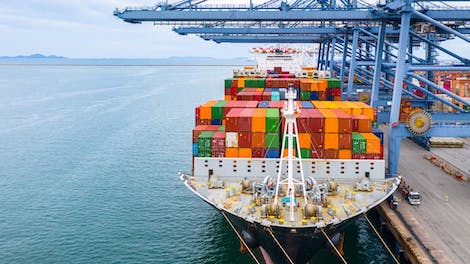


As Freight Procurement Becomes A Priority, How Will Things Shake Up?
2021 was quite an interesting year for manufacturers, retailers, and distributors, leaving many c-suite executives turning over every stone across the company to figure out how to reduce-- or even maintain-- COGS. It's funny to think that something as critical as freight procurement might have flown under the radar until now. Why? Truckload costs hit all-time highs, blowing transportation budgets out of the water. And The Wall Street Journal says shipping and logistics costs are expected to keep rising in 2022. The c-suite has finally taken notice that freight procurement and transportation efforts can impact COGS. This is both good and bad. It’s good because freight procurement will now become a company priority and receive the love and attention it demands. But it can also mean trouble for folks who are reluctant to change. As key decision-makers look to optimize operations, the following concepts might impact transportation and freight procurement teams. Replacing Static Processes with Automated Ones The supply chain crisis and truck driver shortage resulted in record primary tender rejections, which in turn translated into an incredibly competitive-- and costly-- secondary market. Transportation teams who still rely on the decade's old, static freight procurement waterfall process will continue to have a difficult time managing volatile freight markets-- which experts believe isn't changing any time soon. These teams will begin to feel pressure from above to shift manual processes to automated ones. For example, new automation technology helps shippers dynamically source asset-based, compliant FTL carriers when additional freight capacity is needed. With new options and tools, shippers can choose to avoid the costly broker and spot market, mitigating increased truckload cost, obtaining complete data...
3 Biggest Data Questions for Freight Procurement Teams
The logistics industry is as complex and competitive as ever before, especially when it comes to freight procurement. Whether it’s navigating capacity availability or adapting to changes in real-time, the world of freight procurement looks a lot different than it was just a few short years ago. So it makes sense that many companies are looking to use data to gain a competitive advantage. From AI and machine learning to using the cloud, there are many tools companies can use to help overhaul their operations, make their decision-making smarter, and drive agility to prepare for the freight procurement landscape of tomorrow. But how does a company know if changes are needed? Here are three key questions that procurement teams can ask to uncover if a data overhaul is needed: #1. Are transportation costs inline with the market? It’s pretty simple: if shippers don't know how their truckload costs compare to current market rates, it's time to rethink data inputs. Otherwise, your company could be paying too much to ship goods or too little which could impact the quality of your service. #2. Does transportation have solutions to perform the job successfully? Can your transportation team pivot on the fly when freight markets flip? Do they have data to tell them where to get capacity when needed, and how much to charge? Are they as agile as could be? Most teams have yet to automate freight procurement or obtain the actionable data needed to make real-time decisions. #3. How much revenue are we losing due to transportation issues? Does your company know how transportation efforts impact revenue? Everyone knows that customer service is...
How Could The Infrastructure Bill Impact Freight Procurement
There's no doubt the recently passed infrastructure bill will have massive impacts on many industries, including logistics and transportation. Experts agree that short-term impacts could cause more headaches for freight procurement professionals. Two important topics come to mind and need to be considered... road construction and workforce shifts. Road Construction A large portion of funds has been set aside to rebuild roads and bridges. This includes big cities, which provide popular roadways used to haul goods from point A to B. Shippers will need to work with the local government to identify which roads will be under construction, for how long, and when. Only then can shippers determine if route adjustments need to be made to keep goods arriving on time as planned. Workforce Shifts Vaccine mandates, along with other factors, have negatively impacted the number of truck drivers on the road today, which has caused a tight freight capacity market. Simply put, there just aren't enough truck drivers to haul goods. As local infrastructure projects begin, shippers should expect that freight capacity could only get worse as truck drivers leave long-haul trucking for construction-related jobs seeking better work-life balance. To effectively maintain transportation budgets, acceptance rates, and on-time delivery (OTD), shippers need to plan ahead. Many shippers, due to Covid, have already turned to innovative technology to automate manual freight procurement processes, and dynamically source compliant, asset-based FTL capacity when needed. Shippers can also demand 100% data transparency from freight procurement providers, so they are armed with a complete freight procurement/ truckload picture which will enable stronger, data-driven freight procurement decisions. For more on this topic, read this article from Forbes on why the infrastructure...
